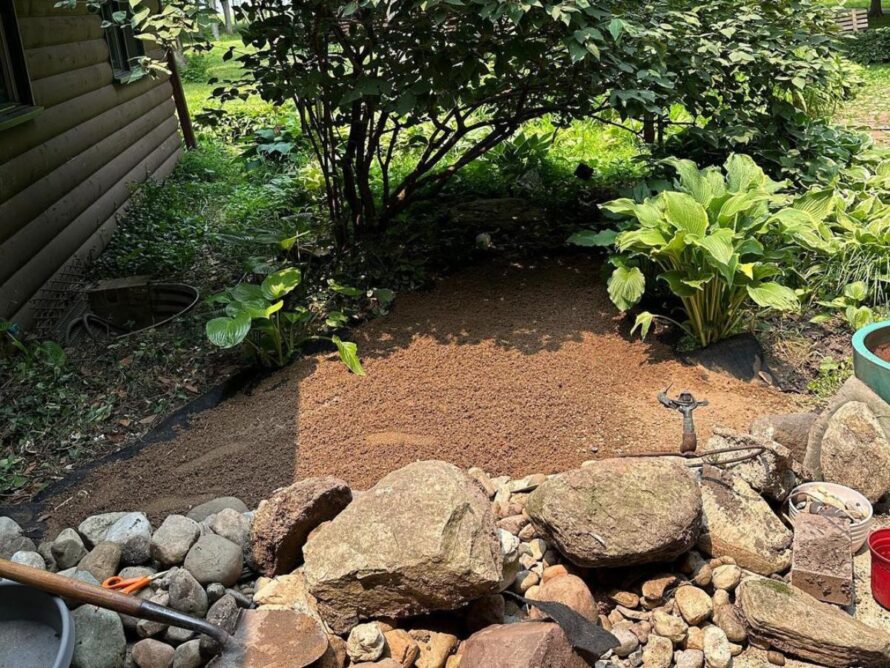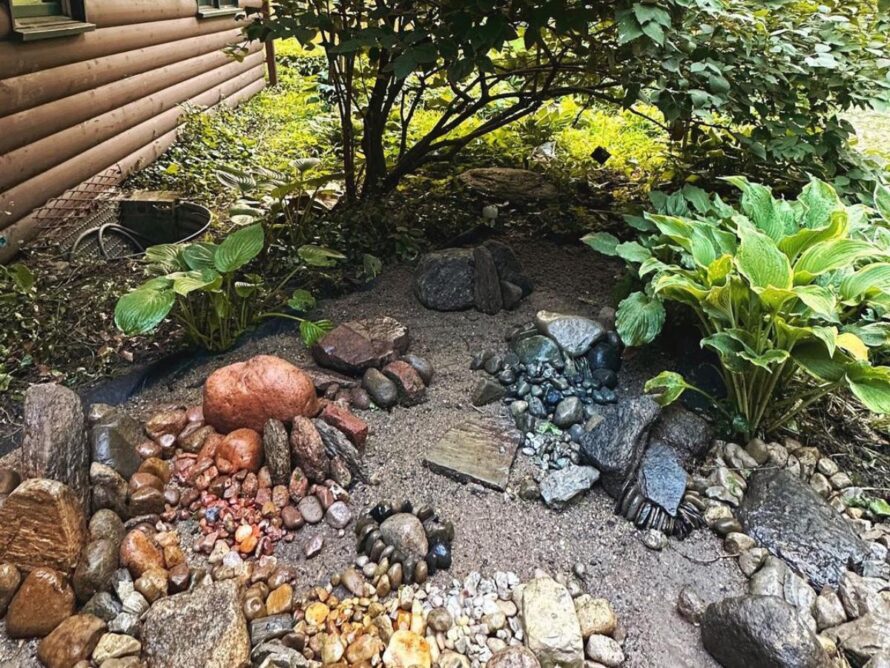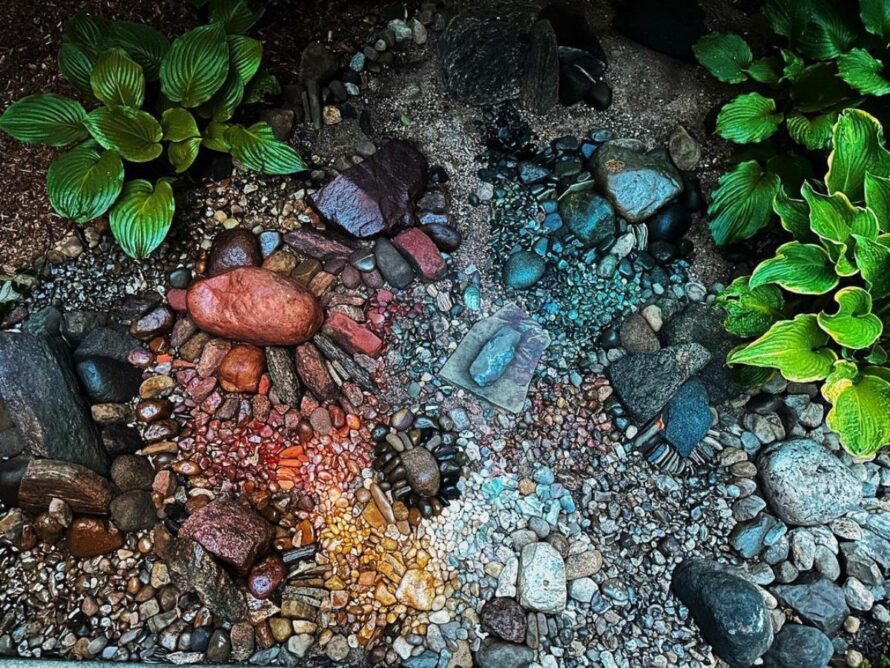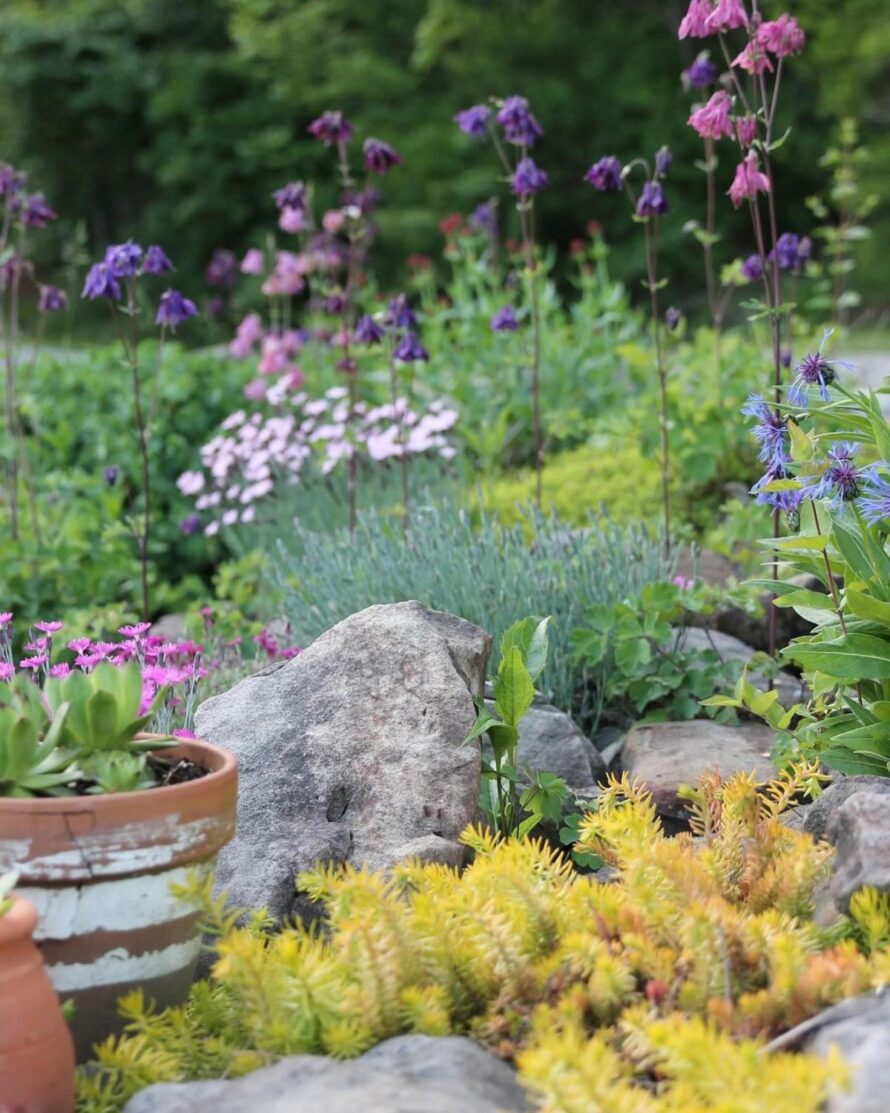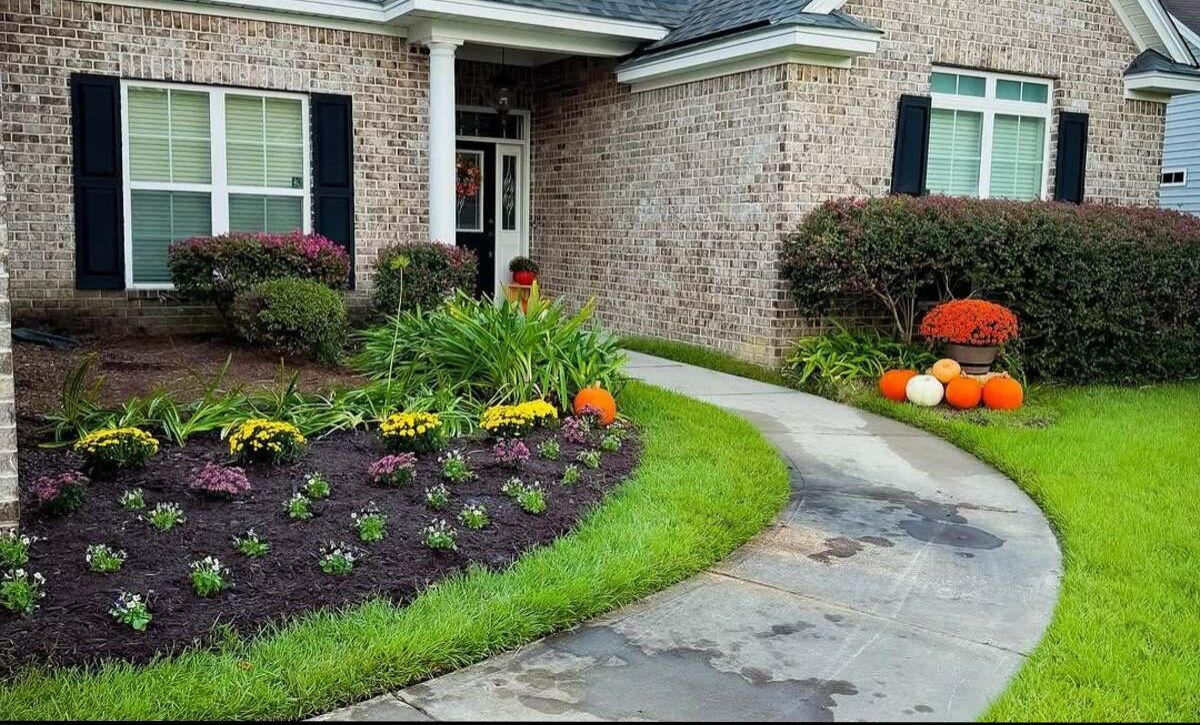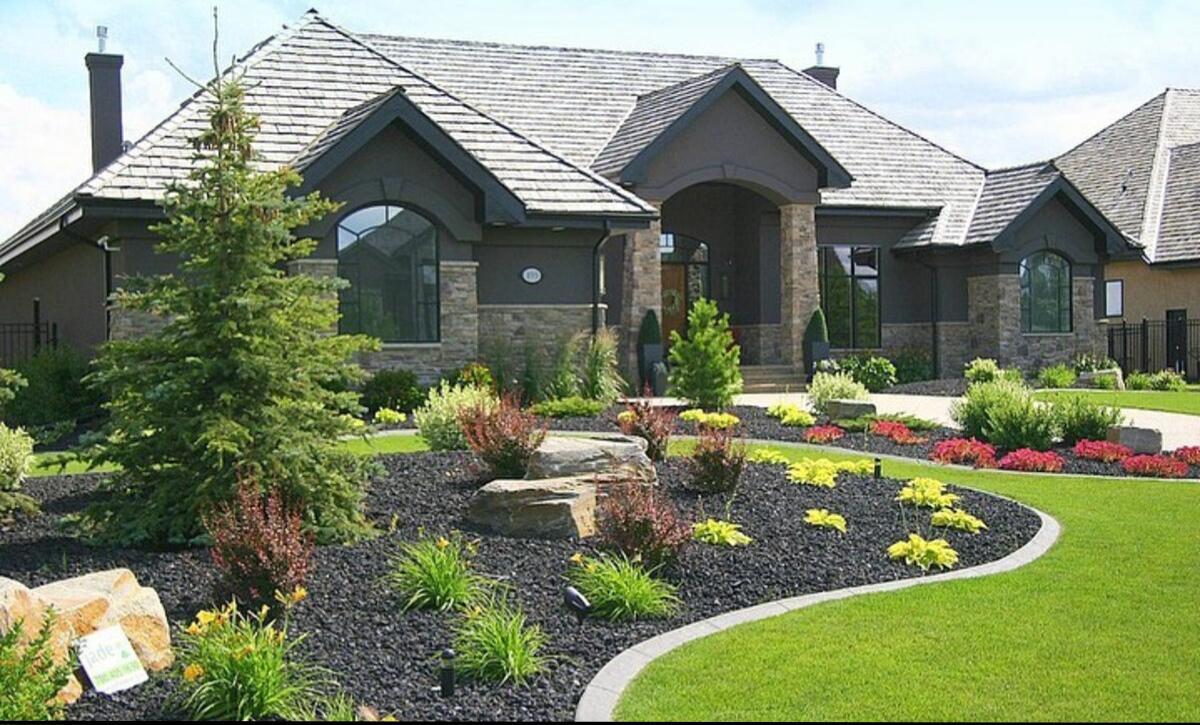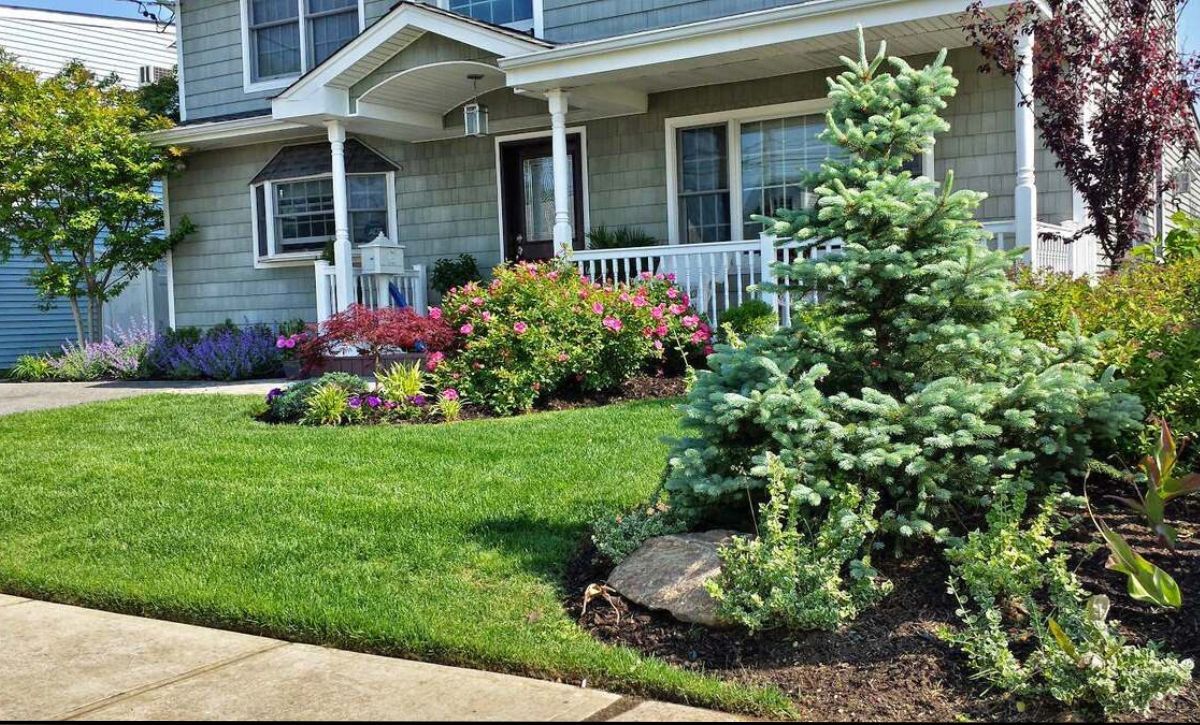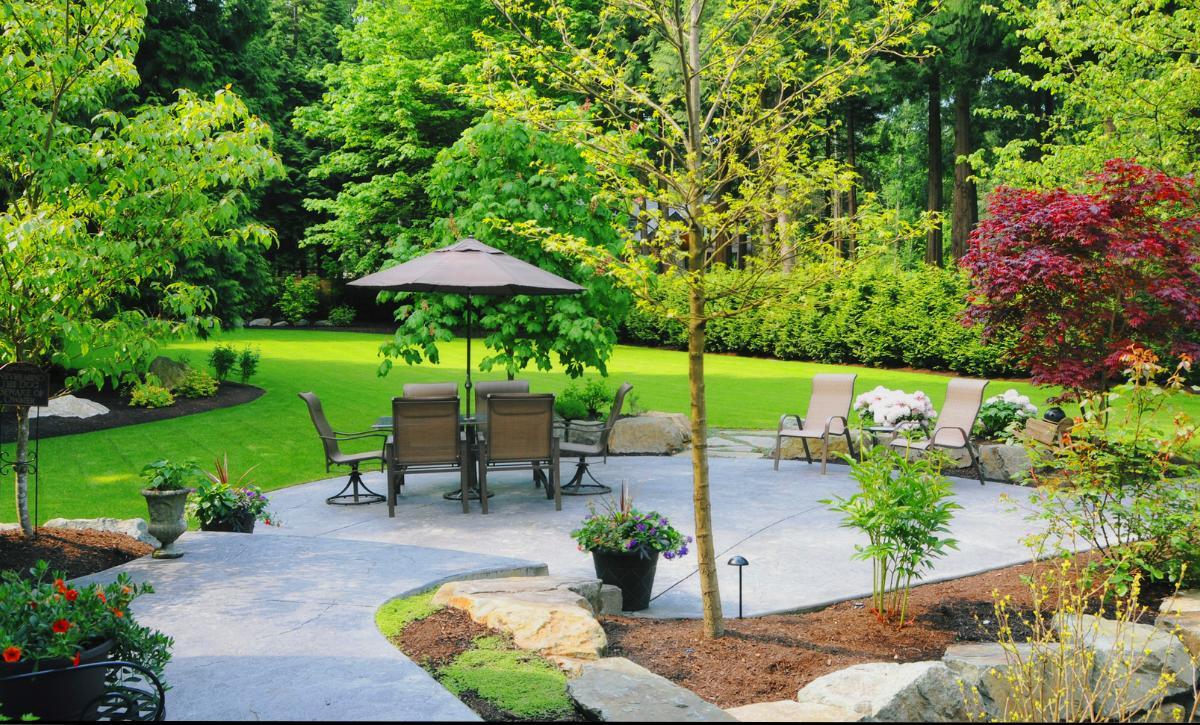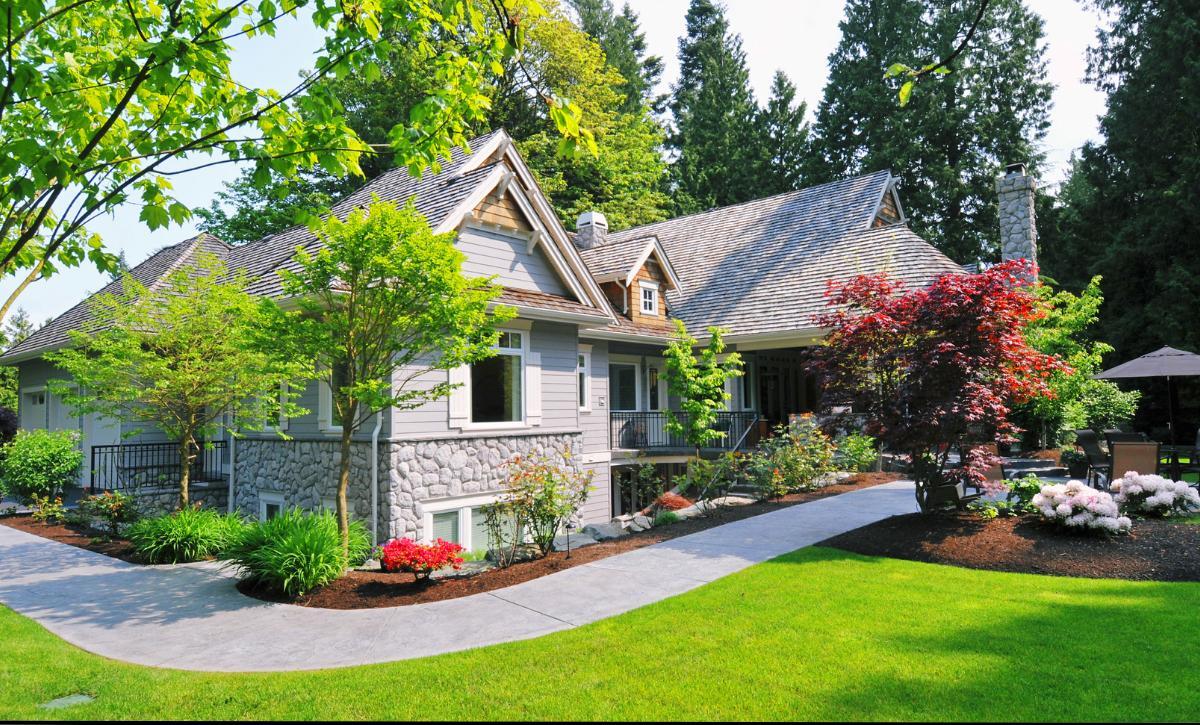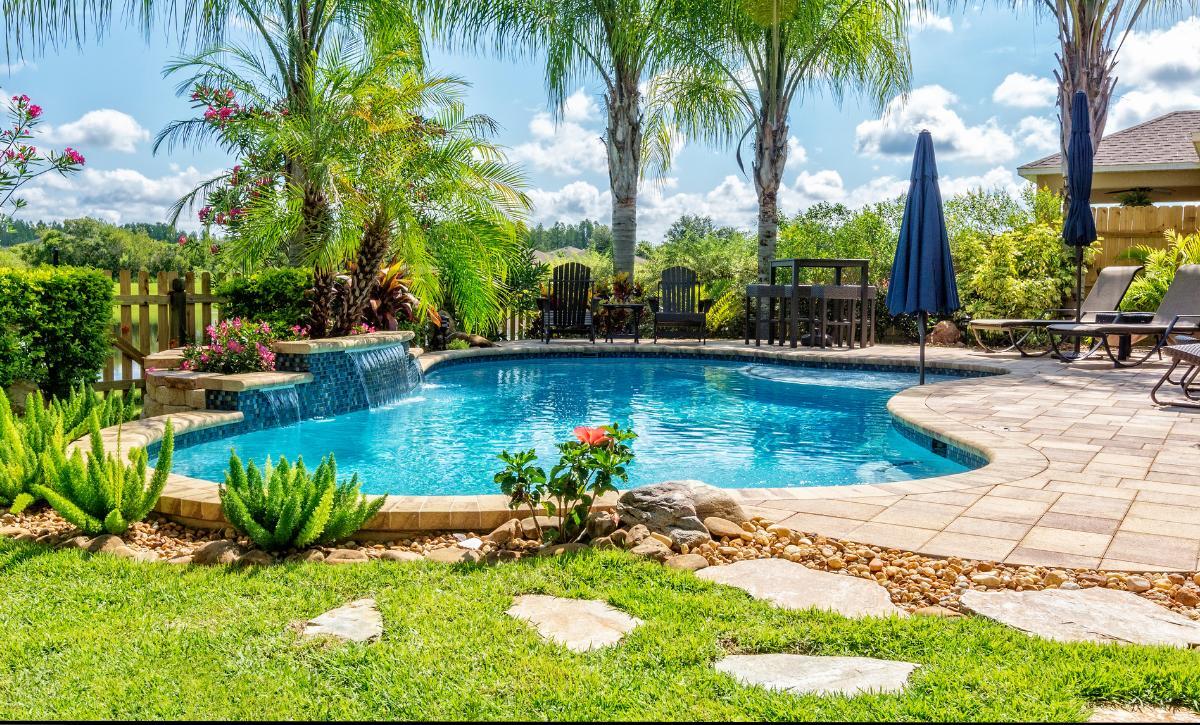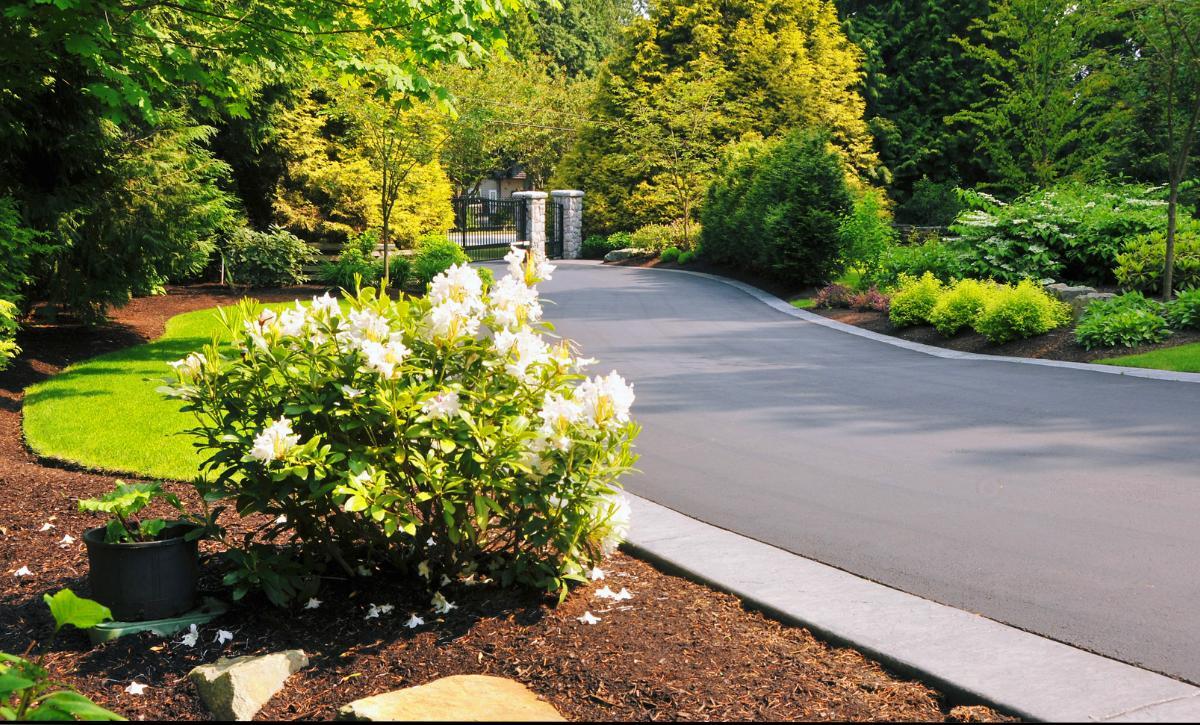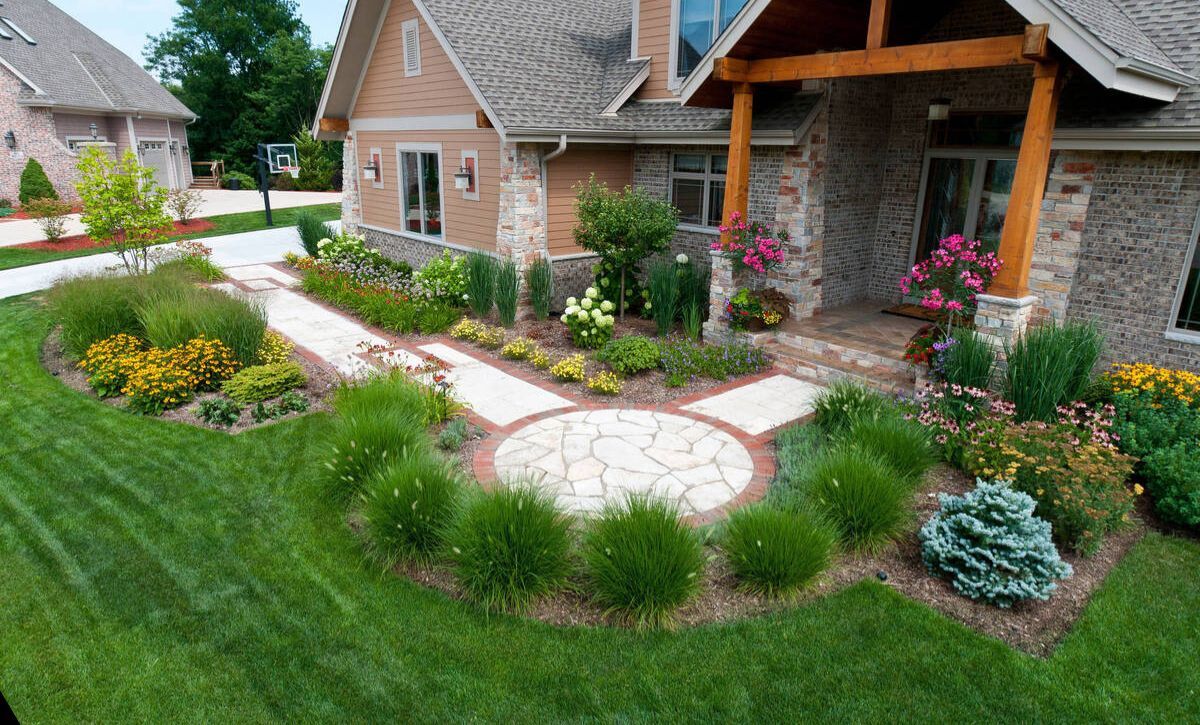Adding a rock garden to your outdoor space is one of the ways to create a naturalistic look that will blend well with the space. Rock gardens come in various designs, from rustic stone mounds to dried river beds, and you can incorporate a variety of plants and soil.
What determines the design is the type and amount of rocks you have, as well as the soil type. A round raised bed will be perfect if constrained to a small space.
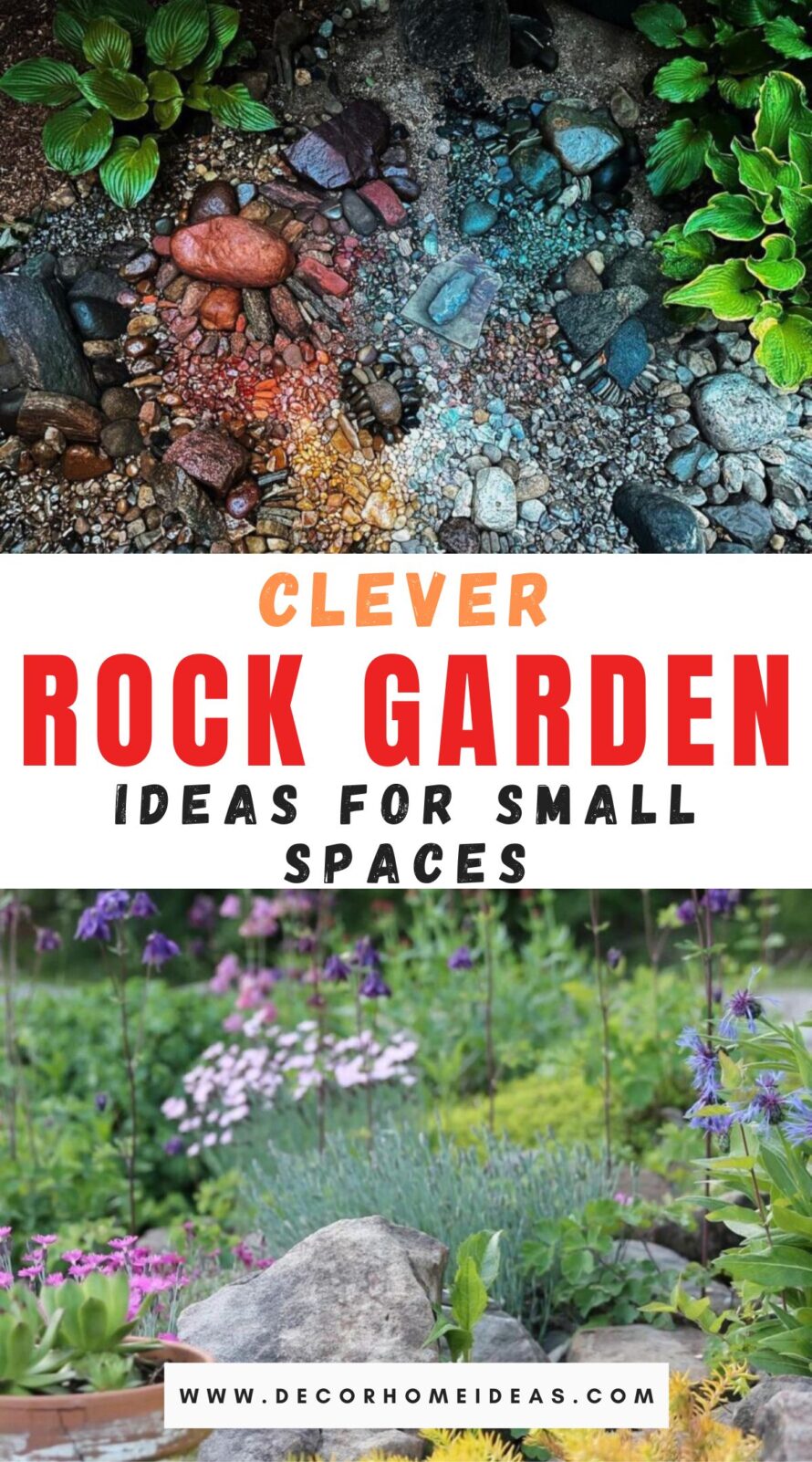
The design is simple and easy to execute, but it can also easily fit even in the most irregular areas and will hardly interfere with your lawn maintenance. Additionally, the rock garden will do with minimal maintenance when well executed.
Here is a guide to making a rock garden for a small space.
Take a look!
Requirements
Tools/ Equipment
- Wheelbarrow
- Shovel
- Garden Trowel
Materials
- Planting soil
- Stones in a variety of sizes
- Select plants
The Procedure
Step 1: Build the First Course
The first step to building a rock garden is setting the foundation. First, you’ll need to clear the grass and any other organic materials from the designated area. Ensure you remove all the organic plants from their roots.
If you have sod, you’ll need to dig it out to ensure there are no stems or roots left, which could develop into shoots later. Next, the perimeter of the rock garden is created by laying out rocks at the desired diameter; for a small rock garden, that should be about 4 feet. The perimeter defines the space and creates some elevation from the ground, hence the raised garden bed.
For the perimeter, you can go with large boulders and the least attractive ones; however, in a small rock garden design, the stones shouldn’t exceed 12 inches in dimension.
Now, fill the area inside the perimeter with sandy soil, which offers good drainage. You can amend your soil with sand and compost to improve drainage if it is compact. Press on the soil to ensure it’s well packed down.
Step 2: Add the Second Course
The second course of stones for the rock garden should be smaller than those used on the perimeter. You can either form a smaller circle within the bigger one or form patterns with bands that pass through the center of the bed perimeter.
After making the second course, you’ll have enough room for planting between the primary perimeter bed and the second course. You can also grow plants between the spaces left in the first and second courses.
When laying the second course of stones, you can explore your creativity. Don’t be afraid to try interesting patterns for your rock garden. Since the large stones were used in the first course, laying the second course should be easier since the remaining stones are lighter and easier to move around.
Try to go for the best-looking stones for this course since they’ll be more visible and likely be the rock garden’s face.
Step 3: Select Plants for Your Rock Garden
As with any landscaping venture, color schemes play a crucial role in the design of a rock garden.
Your plant selection should match the color scheme of your stones. For example, a rock garden made of natural red sandstone will match well with plants with a hint of red or similar bright colors such as silver, yellow, orange or white. The primary goal is to create a garden that matches and has complementary colors.
Another crucial factor to consider is the drainage needs of the plants. Rock gardens host plants that thrive in well-drained soils. Additionally, when choosing the assortment of plants and flowers, it’s important to ensure they have similar care requirements regarding watering, sunlight and the general climate conditions.
Drought-resistant plants will thrive in a rock garden. However, you aren’t just limited to arid plants; you can try annuals and perennials. Diversification and variation are key when choosing plants since this creates a better visual interest. Seek color, plant height, leaf shape and texture variation to maximize the visual impact.
Step 4: Plant Your Rock Garden
Once you have planned the garden layout and where to place each plant, it’s time to plant them. Place the plants in your desired areas while still in their pots.
Usually, the best way to grow a garden is by planting three plants of the same kind together. This improves the survival rate of the plants in case some wither away. Ensure the plants are well spaced since rocks will cover some of the space between plants.
Once satisfied with the arrangement, you can begin planting and adding soil to any needed plants. Don’t forget to use rocks for a decorative effect. It’s preferable to add rocks when planting since adding them before may interfere with the planting process as they may get in the way of digging.
Small areas that are too little to fit either a plant or rock can be covered with rock mulch (this prevents the growth of weeds). Ensure you use the same type of rocks or those with a similar color as the main stones in the rock garden.
Rock Garden Plants You Can Try
We know choosing the right plants for your rock garden is daunting, so here is a small selection of plants to get you started.
1. Hens and Chicks (Sempervivum tectorum). This red shrub will come in handy When adding some low-growing foliage and some color.
2. Snow-in-summer (Cerastium tomentosum). White and silver make good complementary colors, so this white-blooming plant with silver foliage should definitely be on your list.
3. Candytuft (Iberis sempervirens Purity) Another great complementary plant, the striking flowers are likely to elevate the look of any garden.
4. Scotch Moss (Sagina subulata Aurea) is a short plant with small shades of yellow. This plant will match well with natural stone.
5. Yellow daffodil, also known as Narcissus, is a yellow miniature plant that will be the perfect addition to a small rock garden.
6. Wood Spurge (Euphorbia amygdaloides Purpurea) is one of the most colorful plants for a rock garden, with yellow blooms and red stems. It’s taller compared to the previous two, so it will add some depth to your garden.
Patience is also key in planning and planting your rock garden. Rock gardens will look more lavish when the plants bloom in spring and early summer.
For a small rock garden, you’ll need to be patient and wait for the plants to thrive before you can see the full beauty of the garden. If you have the luxury of space, you can grow your plants sequentially to ensure you have beautiful blooms all year round. Annual plants like portulaca will make a great addition to flowering summer plants.
For plants like scotch Moss, which are hardly drought-tolerant, you’ll have to sacrifice their longevity for their beautiful pop of color and texture. This plant is suited for hardiness zones 4 to 9, and while they provide eye-catching small white flowers, they are mainly grown for their solid yellow-green carpet, which will give a good cover for the rock garden. Scotch moss survives in full sun to partial shade.
Ensure you balance flowering plants, ground covers, shrubs, and various textured leaves that will combine well. Contrast the plants so that you can bring out the beauty and color of each plant. However, it’s important to ensure you don’t overcrowd or clutter your garden, as it will appear untidy.
Frequently Asked Questions
How do you make a simple rock garden?
All you need to make a rock garden is a raised garden with rocks for the perimeter and smaller rocks and soil inside the perimeter. Then, you can add the selection of plants to complete it. Low-maintenance plants suitable for your climate will be a plus since you won’t need to waste much time on the upkeep.
How do I keep weeds out of my rock garden?
Adding a layer of rock mulch in your garden can help suppress weeds and cover small naked spaces. Alternatively, you can use ground covers that thrive in your climate. Once they have grown, they can deter weeds from growing.
What looks good in a rock garden?
A rock garden has to have plants with a balance of height, texture and color in your garden. You can fill the space between plants and rocks with ground covers such as sedums. You can even add ornamental grass to improve the height and texture of the space. Seasonal flowers can add color and visual interest to the rock garden.

